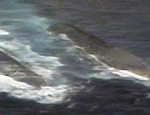 Can you believe that two workers, but no management have been formally charged in the Lac Megantic railway disaster back in July 2013, what is Canadian Justice about?
Can you believe that two workers, but no management have been formally charged in the Lac Megantic railway disaster back in July 2013, what is Canadian Justice about?
The safety related laws of Canada are, generally speaking reasonably adequate, at least on paper, but the administration and enforcement of these laws can only be described as pathetic and widely influenced by politics at the highest level’.
Canada seems to once again to forget that safety is the primary responsibility of management, it starts and ends in the boardroom, the TSB’s official Investigation report documented how cost cutting and increased profit drive was a primary factor or route cause of the disaster, the fact that the Montreal, Maine and Atlantic Railroad (MMA) had a negative safety culture, poor or non-existent safety leadership, should catalogue a list of specific charges against the management.
Statutory laws in Canada place many wide sweeping duties and obligations on employers, these duties include inta alia, the provision of a safe place of work, a safe system of work, information, instruction and training, adequate supervision, provision and maintenance of plant, trains and equipment, yet no employers where ever prosecuted, they should, if justice was to be seen to be served, be serving 5 years in jail for criminal negligence causing death, or at least fined a few $million, but no, in Canada the law is only to make us look like a caring country.
The Devastation of downtown Lac Megantic, now re-building lives and a community.
Locomotive Engineer, Thomas Harding and train controller Richard Labrie have been charged with criminal negligence causing death, obviously scapegoats for the disaster which killed 47 people and destroyed downtown Lac Megantic, the trial date is set for September 11th2017, (date coincidence?.) The questions I ask over and over again is that why if workers don’t determine….site layouts…the speed of trains, how many brakes to apply on trains or the temperature in workshops…train parking areas, amounts invested in rail R&D & approved training…workers don’t buy the trains, trucks, tools, bulldozers, cement, they don’t create the railway schedules….workers don’t design the reward system, or the organizational structure, in short workers don’t determine over 90% of what’s in the system!!!! How come they are blamed for so many accidents like this one in Lac Megantic?
The previous owner of MMA which went bankrupt, is a well-known Multi-Millionaire and principle shareholder Edward Burkhardt who still runs a very successful railway management company “Rail World” escaped all liability, despite accumulating several safety violation warnings prior to the disaster, these did not cost him a single cent, or result in charges laid.
These types of disasters occur in Canada with monotonous regularity, unfortunately politics is often a factor, Industry lobby groups, the oil giants, railway barons or other powerful groups lobby politicians, even at minister level to lower safety standards that was the purpose of Bill C45.
TC is now simply trying to look proactive, while in reality for many years they were reactive allowing MMA and other railway companies to get away with practices that compromised safety, such as having only one person driving trains, they also found an insufficient number of handbrakes were applied to the train, although the hand brakes on the train failed because it was parked on a grade, why did TC Inspectors not review these practices, “it is like shooting at the mice, and missing the elephants” air brakes have been reliably stopping trains for almost 150 years, the air braking system on trains have proved very safe and effective if properly used and maintained, “but like everything else, it involves certain procedures that need to be followed. “What did the MMA Safety Management System procedure or TC have to say?
The TSB report stated that that the failure of the locomotive air brake (the independent brake) on the night of the disaster was a key factor that led to the tragedy, however, near the end of the same report, a single paragraph stated the accident “likely” would have been avoided had the air brakes on the rail cars (the automatic brake) been set as a backup safety precaution.
In addition to hand brakes, trains have two air-brake systems: the independent brake, which secures the locomotives, and the automatic brake, which holds the rail cars in place, only takes 10 seconds to engage the automatic brake, but Transport Canada did not require companies to use the automatic brakes and MMA Rail had specifically instructed its staff not to use them, modern technology has advanced the effectiveness of automatic breaking systems on railways but apparently not a requirement in Canada,
While we are all wise after the event, it seems to me that TC has a host of gross negligent actions to answer to the residents of Lac Megantic, and indeed the Canadian public, many of the same observations in the 1979 Mississauga train derailment when more than 250,000 residents in suburban Toronto were forced from their homes when a freight train carrying caustic, explosive and poisonous chemicals derailed near the intersection of Dundas Street and Mavis Road in Mississauga, Ontario, just before midnight.
Several tank cars filled with propane exploded, while other tankers spilled styrene, toluene, caustic soda, and chlorine onto the tracks and into the air.
Another example was the 1986 Hinton train disaster travelling at 96 km/h at the time of impact, the head-on collision between a Canadian National Railway freight train and a Via Rail passenger train left 23 dead and 95 injured. A commission of inquiry concluded the CN employees ignored signals to stop and failed to “follow established railway operating rules.” It also condemned CN’s “railroader” culture that ignored safety regulations, again it was management’s responsibility, but once again TC reacted against workers not management.
Westray Mine: Another example which illustrates what seems to be the Canadian way, the Lac Megantic outcome has many similarities with the Westray Mine disaster on May 9, 1992 where a public enquiry was held, and then Nova Scotia Supreme Court Judge Peter Richard issued a hard-hitting report that concluded that the tragedy was the result of “incompetence, mismanagement, bureaucratic bungling, deceit, ruthlessness, cover-ups, apathy, expediency and cynical indifference.” It is difficult to imagine stronger language to describe this mines management of safety, but again In April 1993, the RCMP charged Curragh and two of its former managers with manslaughter and criminal negligence causing death. But the case eventually fell apart when the Crown concluded convictions were unlikely, nobody served any time in jail, or even a fine.
Richard singled out that Westray management and its owner specifically, Clifford Frame, as being ultimately responsible for conditions at the ill-fated colliery. The judge also blamed complacent bureaucrats who tolerated poor safety practices and ineffective auditing, Inspections or monitoring of outdated mining laws. The inquiry found there was little safety training at the mine, ventilation was poor and the mine’s methane detectors were often broken. Mine managers ignored directives to reduce the buildup of volatile coal dust, and rockfalls were a common occurrence that went unreported.
As a result of public outcry, the government passed Bill C45, which is a law that amended the Canadian Criminal Code and became law on March 31, 2004 and became known as the “corporate killing law,” which made it possible to lay criminal charges and jail … and established new legal duties for workplace health and safety, and imposed serious penalties for violations that result in injuries or death, again I ask why have charges not been laid in the above cases.
Ocean Ranger is yet another Canadian example, that despite having adequate criminal laws for serious accidents or disasters, those of us who are designated as employers have specific duties and responsibilities and wide sweeping criminal liabilities for failures to meet those responsibilities, penalties include jail time and unlimited fines, but if the enforcing bodies don’t prosecute the correct executives, those receiving the big buck salaries are never held accountable, which brings me to another example the Ocean Ranger.
After all 84 crew members perished on board the Ocean Ranger on Feb 14th 1982, A joint Federal-Provincial Royal Commission on the Ocean Ranger Marine Disaster found that the crew were not trained, the safety equipment was inadequate, there were no safety protocols for the supply ship, and that the platform itself had a number of design flaws.
The Royal Commission concluded that Ocean Ranger had design and construction flaws, particularly in the ballast control room, and that the crew lacked proper safety training, survival suits and equipment where inadequate.
Pictures Right the Ocean Ranger before the 14th February 1982
Below, upside down the legs and feet are towed to port
The Royal Commission also concluded that inspection and regulation by both the United States and Canadian government agencies was ineffective. In addition to key recommendations for Canada’s offshore oil and gas industry, the commission recommended that the federal government invest annually in research and development for search and rescue technologies, such as improving the design of lifesaving equipment.
 The reports included almost 140 recommendations, some of which were soon implemented, a number of other key proposals however have not been implemented, such as replacing the search and rescue helicopters, which still hadn’t been implemented 35 years later, I could go on but consider the message is clear “I cannot say whether railway or Industrial safety in Canada will get better if we change, what I can say is that safety must change before it gets better”.
The reports included almost 140 recommendations, some of which were soon implemented, a number of other key proposals however have not been implemented, such as replacing the search and rescue helicopters, which still hadn’t been implemented 35 years later, I could go on but consider the message is clear “I cannot say whether railway or Industrial safety in Canada will get better if we change, what I can say is that safety must change before it gets better”.
Bio:
Dr. Bill Pomfret is President of Safety Projects International Inc. who has for over 40 years educated and influenced management Internationally to adopt effective safety & risk control policies, practices and procedures that prevent or mitigate human and economic losses arising from accidental causes and adverse occupational health exposures.
Bill has played a major role in bringing justice and compensation to many victims of the Bhopal, India disaster and is also credited with improving the safety health and welfare of thousands of migrant workers from India, Philippines, Bangladesh etc who are being exploited and forced to work and live in dangerous conditions.
One of Bills most important campaigns was regarding the exporting of Asbestos from Canada to India where 368,000 tons was shipped annually, spreading human suffering and misery for decades to come, his demonstration and arrest on parliament hill for tearing up his Canadian Passport received International attention, claiming the exportation of Asbestos to India was close to genocide by the Canadian government, guaranteeing deaths of unsuspecting Indians for decades to come, ban it in Canada, but export it to the third world, that’s the Canadian way.
Bills articles may be reproduced, reused or copied in the interest of safety by interested parties.
For further information, contact
Dr. Bill Pomfret; MSc; FIOSH; FBIM; FRSH; FBIM;
Managing Consultant, Dr. Bill Pomfret & Associates
Incorporating Safety Projects International Inc.
26, Drysdale Street, Kanata, Ontario, K2K 3L3.
www.spi5star.com pomfretb@spi5star.com
Tel: 613-2549233


